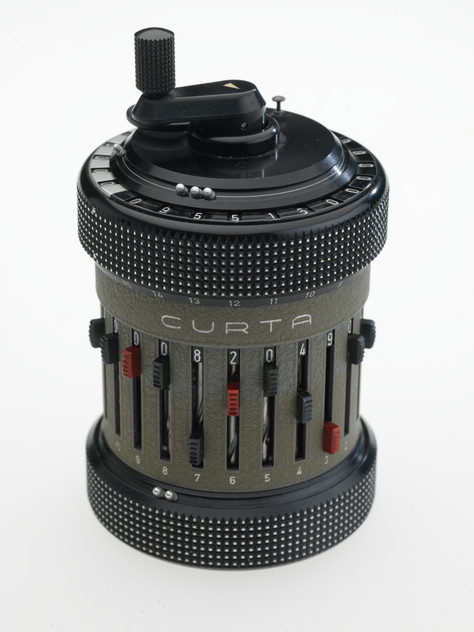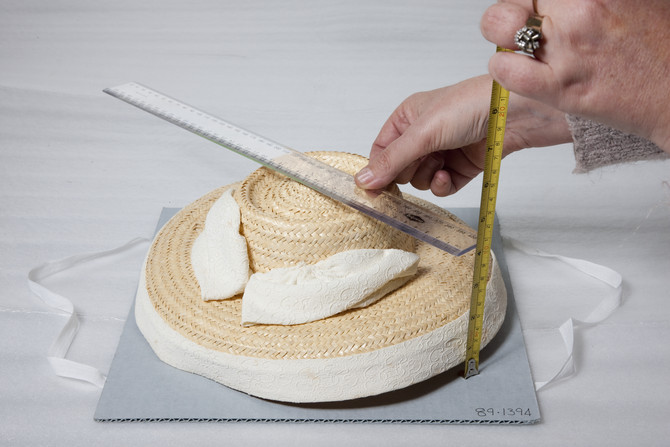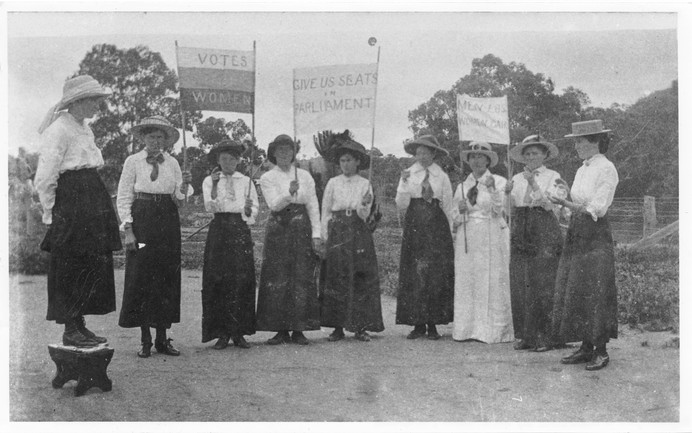Lee-Anne Raymond is Senior Coordinator, MV Images (DAMS) at Museums Victoria in Melbourne, Australia
When Mary Poppins measures herself using her magical tape measure it reads, “Mary Poppins, practically perfect in every way.” (Mary Poppins, P. L. Travers, 1934)
In the real world realm of Digital Preservation we can strive but will struggle to approximate such perfection without the assistance of the right software and engineering principles, as an intervening Poppins, in order to underwrite the magic. To perform digital preservation actions at scale competently and efficiently and in a repeatable way with trusted results, practically perfect, we need systems as well as systematic approaches. As laudable as our efforts are to do so using manual techniques underpinned by strict rules based standards, they do not and will not meet the challenge that the digital realm presents us.

UI: 000251289 – Model at beach in plastic raincoat an Umbrella, 1959. Source: Museums Victoria, Laurie Richards Studio Collection
Copyright Statement - Copyright Museums Victoria 1959, Released Under Licence - Non-exclusive licence
Everything about managing digital content and its digital preservation represents cost; in human resourcing, infrastructure, time, and for collecting institutions, evermore burdensome technical and financial procurements. As a growing area of business responsibility for collecting institutions it is surprising to find that it comes as a shock to many that managing and preserving digital objects is not without considerable commitment and challenges. What’s more it is ongoing and forever. Inherently expensive to set up, systems solutions must then be managed, enhanced and upgraded to avert obsolescence issues. Systems must be maintained and enhanced or cracks will occur in workflows, outputs and functions. Facing the sector are the ongoing battles to exact from funding sources the kind of commitment to properly resource the documenting of collections into software purchased at great expense. Therefore, critical business system can be either implemented poorly, or configured poorly, or resourced poorly, or suffer from some combination of or all of these failure points. Into this mix is the need to as well recognise the fact that in technology and skills terms, digital preservation, as it currently stands, is complexity personified, then squared.

UI: 000163424 - Curta Mechanical Calculator, Type II, 1966. Benjamin Healley
Copyright Statement - Copyright Museums Victoria 2013
Digital Preservation is an institutional wide commitment. It should form as a priority business function and be represented in new or future strategy. This is because you can’t just do a little digital preservation to some of your digital object collections, just as you cannot do just a little bit of conservation to some of your physical objects. Digital Preservation equally requires an intensive, integrated, consistent and pillared, Strategic Planned, approach. As with preservation of the physical, activities to accomplish digital preservation requires organisational commitment through policy, backed by financial commitment, to allow an institution and its staff to meet the challenges. As one of my colleagues has succinctly put it, we need to treat the digital object with the same levels of care as we do the physical. Digital collections, their acquisition, care and management, under equivalent terms, recognises that just as a physical item can be damaged if not well understood, so can the digital. Both must be handled with great care through tailored knowledge and shared practice.

UI: 000047462 – Measuring Objects, MAA Cataloguing Manual, 2009. Source: Museums Victoria, Benjamin Healley
Copyright Statement - Copyright Museums Victoria 2009
In terms of physical collections the well documented Ten Agents of Deterioration stand as the benchmark for preventative collections care. Digital collections require a similar model and its adoption. Many consider that digital collections can and do fit within this existing model. I can see why as all ten would or could impact the digital with devastating consequences, however, I believe, #10 Custodial Neglect & Dissociation is perhaps where there is the most solid ground for arrival at that assumption.
Digital assets can present to an institution in a variety of ways; by Email, drop-box, portable disc, drive, device, other carrier, as well as via numerous other methods including scraping digital content from websites, “socials”, or download. How we document a digital asset’s pre-acquisition status is as important to the provenance of a digital acquisition as for a physical acquisition. I know it has been written and mused on by others across the sector that it is the case that far more attention (understanding) can be paid to the care, handling, documenting and storage of a digital carrier or device than of the precious cargo it contains, being the digital content itself.
Correct handling is critical to prevent exerting benign change/deterioration onto digital content. Improper access or storage of a digital file can permanently damage or alter its underlying character and/or its digital identity, its technical fingerprint. Digital acquisitions must be quarantined and inspected by the right tools and by those with the skills to ensure the asset and its information are intact pre and post arrival onto our networks, prior to systems ingest. Digital quality checks, technical metadata examination and assessment of digital file health and its management/handling in our custody form part of the custodial chain of provenance, just as do conservation checks pre and post arrival of a physical object.
Traditional physical object collecting practices as well as a digital skills divide has meant there exists a commensurate divide in how we do manage the digital compared with the physical. So named born digital collections are regarded differently due in part to a lack of understanding of their tangibility and interconnected meaning for our immediate past, present and future. On the other hand, an explosion of collections digitisation and open collections development has resulted in millions of digital file collateral requiring administration and rights management for accessibility. It has created a kind of digital collateral vs digital collections divide as well (I believe) with one category enjoying the kind of attention the other technically has the greater right to under statutory regulation. Institutions like my own must all have experienced very similar digital collateral growing pains and divisions.
What I am calling for is evolution which may come across as impertinent revolution.

UI: 000164006 – Women staging a protest on the right to vote, as a fund raising tableau, referring to the English suffragette activity. South Australia, 1916. Source: State Library of South Australia
Copyright Statement - Out of Copyright State Library of South Australia
Part of the way forward is through fundamental change to institutions’ funding models targeting the digital divide issues with greater, ongoing, publicly funded commitment, but as well, I propose, will require the examination and evolution of collections development and management policy. If collecting institutions are to remain relevant as repositories of memory and education of and for our social, political and cultural inheritance, then all of our strategies going forward need to accommodate and preserve the digital product of our times. Libraries & Archives already forge this course, and this needs to be part of the fabric of all of our collecting institutions, ensuring that the future recognises itself through its own collections and can access its past.
[
UI: 000325846 – Woman lying on a couch using a smart phone in the Cacophony exhibit. Beyond Perception Exhibition, 2018. Source Museums Victoria, Benjamin Healley
Copyright Statement - Copyright Museums Victoria 2018. Released Under Licence - Non-exclusive licence
At my own institution, progress towards implementing a digital preservation program has begun. Previously activities concerning digital content and the collections have duly focused more upon the role, functions and duties the institution has concerning digitising the physical collections, for public access, care, description, identification, development and preservation. In mid-2019 with the help of my IT and systems counterparts, saw commencement of Fixity Checking 1.0 for our collection systems’ managed digital assets. Technical limitations narrowed the scope, however there is now a realisation of the planning and actions producing digital preservation data that can be used to measure our digital preservation performance. Challenges remain, and the need is ongoing, as such activities are preferably performed with the assistance of a digital preservation system without the need for any special Poppins magic.
Considerable time and resources are required to repeat these activities, and to then support and administer the resulting data back into the asset records using existing systems. Going forward it is a worthwhile process but it must be recognised it is resource inefficient. So it is important that the realisation of a digital preservation program provides as well a model and standard from which to draw on and inform the future. This is a valuable achievement for the digital assets managed in our systems, and we are looking to extend the process to include the relevant digital assets stored outside of systems. Although technically secure, these valuable assets reside in a network equivalent of a deep vault. These assets are very important, they are safe, but bits and bytes can degrade by simply being stored on servers, secure or otherwise. Storage is not management.
Essentially this could become a vault of risk mitigation and unaddressed technical obsolescence.
The overall result is of having made a great start integrating digital preservation to underpin solid digital asset management systems and workflows. There is now a pathway to improvement with the aim, in time, to measure up as practically perfect in every way.

UI000027974 – Butterfly specimens - Various Pierid species. Source: Museums Victoria, Benjamin Healley
Copyright Statement - Copyright Museums Victoria 2006. Released Under Licence - CC BY
Lee-Anne Raymond
Senior Coordinator, MV Images (DAMS)
Museums Victoria
museumsvictoria.com.au
